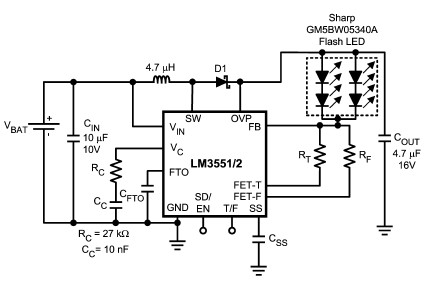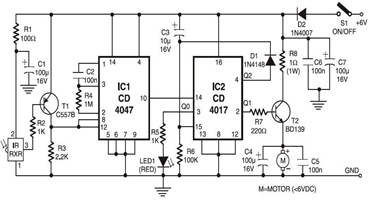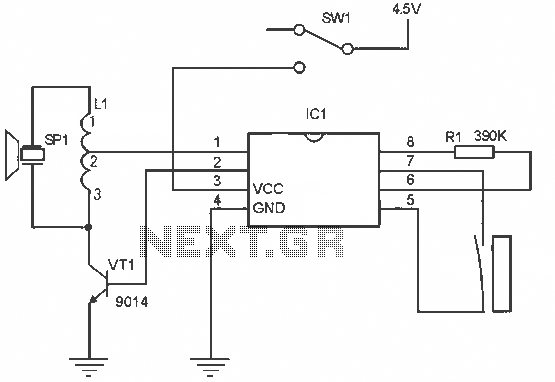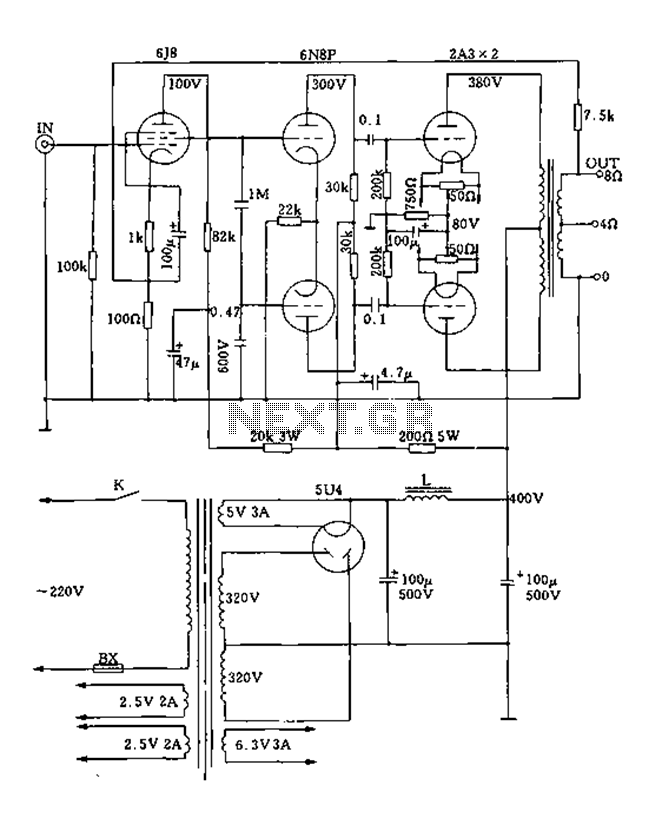
Darkroom time exposure of the second circuit
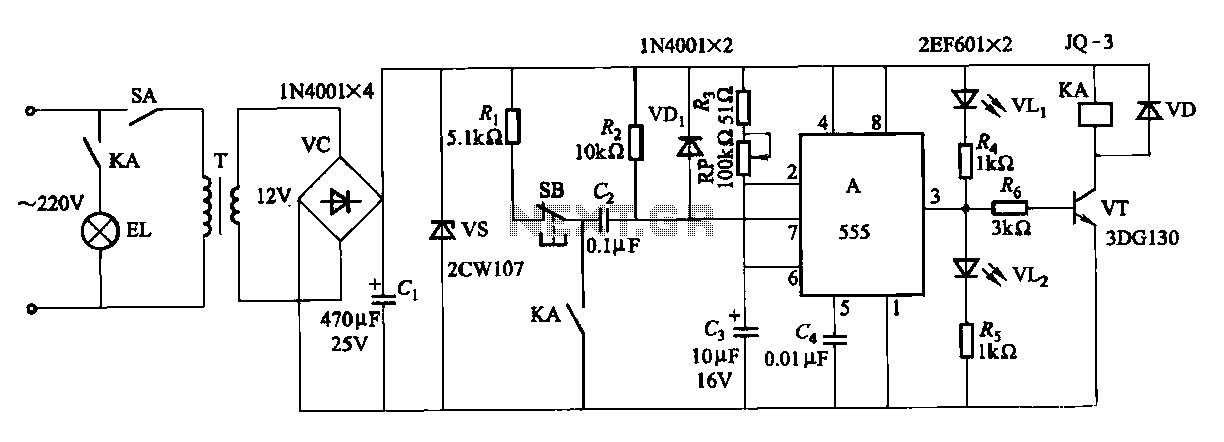
The second circuit for darkroom time exposure utilizes a 555 timer integrated circuit (IC A) for timing functions. A relay controlled by the circuit regulates the exposure light source. The exposure time can be adjusted using potentiometer RP, allowing variations between 1 to 120 seconds. For longer delays, increasing the capacitance of capacitor C4 is recommended.
The described circuit employs a 555 timer IC configured in monostable mode to create a time delay for exposure in a darkroom setting. The 555 timer generates a pulse output upon receiving a trigger signal, which initiates the timing cycle. The relay, activated by the output of the 555 timer, controls the power to the exposure light source, ensuring that the light is turned on for the duration specified by the timing circuit.
Potentiometer RP serves as the primary means for adjusting the exposure time. Its resistance value directly affects the time constant of the timing circuit, which is determined by the formula T = 1.1 * R * C, where T is the time in seconds, R is the resistance in ohms, and C is the capacitance in farads. By varying the resistance of RP, the exposure time can be finely tuned between 1 second and 120 seconds.
For applications requiring longer exposure times beyond the standard range, the circuit can be modified by increasing the capacitance of capacitor C4. This adjustment increases the time constant of the circuit, thereby extending the maximum exposure time. It is essential to ensure that the relay used can handle the power requirements of the exposure light source and that the components are rated appropriately for the voltages and currents involved in the circuit.
Overall, this darkroom exposure control circuit provides a flexible and efficient solution for managing light exposure times, suitable for various photographic processes. Proper calibration of the potentiometer and capacitor will ensure optimal performance and reliability during operation.Darkroom time exposure of the second circuit It uses 555 IC A for the timing circuits. KA by the relay contacts to the control system of the exposure light source. Adjustment p otentiometer RP, exposure time can be varied within the scope of 1-120s. For more long delay, may increase the capacity of the capacitor C4.
The described circuit employs a 555 timer IC configured in monostable mode to create a time delay for exposure in a darkroom setting. The 555 timer generates a pulse output upon receiving a trigger signal, which initiates the timing cycle. The relay, activated by the output of the 555 timer, controls the power to the exposure light source, ensuring that the light is turned on for the duration specified by the timing circuit.
Potentiometer RP serves as the primary means for adjusting the exposure time. Its resistance value directly affects the time constant of the timing circuit, which is determined by the formula T = 1.1 * R * C, where T is the time in seconds, R is the resistance in ohms, and C is the capacitance in farads. By varying the resistance of RP, the exposure time can be finely tuned between 1 second and 120 seconds.
For applications requiring longer exposure times beyond the standard range, the circuit can be modified by increasing the capacitance of capacitor C4. This adjustment increases the time constant of the circuit, thereby extending the maximum exposure time. It is essential to ensure that the relay used can handle the power requirements of the exposure light source and that the components are rated appropriately for the voltages and currents involved in the circuit.
Overall, this darkroom exposure control circuit provides a flexible and efficient solution for managing light exposure times, suitable for various photographic processes. Proper calibration of the potentiometer and capacitor will ensure optimal performance and reliability during operation.Darkroom time exposure of the second circuit It uses 555 IC A for the timing circuits. KA by the relay contacts to the control system of the exposure light source. Adjustment p otentiometer RP, exposure time can be varied within the scope of 1-120s. For more long delay, may increase the capacity of the capacitor C4.
